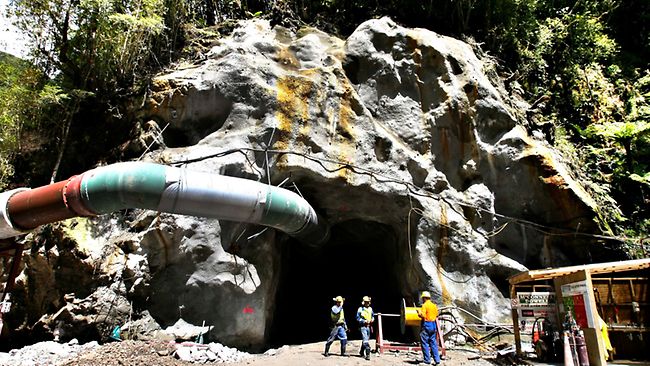UPDATED: Further explosions in the Pike River mine are possible as a volatile mix of gases prevents a rescue crew from entering the mine to retrieve the bodies of the miners who are presumed dead following a second massive explosion yesterday.

A number of “inertisation” technologies, such as liquid nitrogen vapourisation are being considered to stabilise the situation in the mine and eliminate possible ignition sources such as smouldering fires. It is understood a GAG jet engine unit from New South Wales is most likely to be used to force jet exhaust into the mine and create an inert atmosphere, eliminating any means of possible further ignition.
Associate Professor David Cliff, Operations Manager at the Minerals Industry Safety and Health Centre at the University of Queensland is an expert in the use of inertisation technologies for extinguishing mine fires. This paper by Dr Cliff outlines previous uses of the technology in Australia.
Mr David Bell, engineering and mining geology specialist in the Geological Sciences Department at the University of Canterbury comments:
“My understanding is that flooding the mine with water would be the preferable option, but that clearly limits access to recover bodies etc. We also need information about the apparently sudden methane inflow that triggered the first blast, therefore underground access is a further requirement for technical experts.
“Whilst not an expert on this subject, nitrogen provides an inert atmosphere which apparently is #2 choice if water is not an option. It is my understanding that nitrogen will not cool heated coal in the same way that water will, but at least it addresses the flammability issue. I understand that appropriate equipment is available in Australia.”
Associate Professor David Cliff comments:
“We use a range of devices, most relatively ‘low flow’ in nature. Air Liquide promote a device called a “floxal” – basically it separates the nitrogen from air by membrane technology. We have units in routine use in Queensland and New South Wales that produce up to 0.5 m3/sec. All they need is three phase power and they can be transported on two semi trailers.
“Liquid nitrogen vapourisation could also be used. This was used at the Huntly West Mine in New Zealand in the early 1990’s. It needs tankers and vapourisers from a compressed gas and equipment supplier like BOC or a New Zealand equivalent – nitrogen (N2) is created as a byproduct of the steel industry.
“New South Wales has the Mineshield system that can generate high flows subject to supply capacity. Liquid carbon dioxide could also be used if available.
“There are also inert gas generators that use boilers/burners to create an inert atmosphere – diesel – low flow up to 0.5 m3/sec and high flow as in the GAG jet engine unit.
“The low flow devices may be adequate because of the small size of the mine but if speed if required then the GAG jet engine unit is the only real option.”
Re-cap of Pike River mine explosion events
Further commentary on the mine explosions from Mr David Bell, engineering and mining geology specialist in the Geological Sciences Department at the University of Canterbury. He comments:
“The first explosion last Friday afternoon around 3.45pm presumably resulted from relatively rapid methane buildup in the developing mine to within the explosive range. It is likely that ignition resulted from operations ongoing at the time, although what exact trigger was remains unknown. Oblique aerial photography later that day indicates vegetation scorching around the ventilation shaft, and two workers in the main access drive survived the explosion and managed to make their way from the mine workings.
“In the ensuing few days regular (half-hourly), monitoring of mine gases indicated elevated levels of methane and carbon monoxide, the latter presumably indicative of smouldering coal in the Brunner Seam. The mine was considered unsafe for entry for rescue or recovery because of the risk of further explosions. A hole drilled into the workings about 200m west from the ventilation shaft encountered very high levels of methane and other gases in the mine atmosphere, hole-through occurring some 12 hours or so prior to the second explosion.
“The second explosion occurred at 2.37pm yesterday (24th November), and was considered by observers to be as large as the first. The explosion is attributed to methane levels within the explosive range (4-14%), but the trigger is not known. No work was possible in the mine at the time, and it is therefore possible that smouldering coal from the initial explosion may have been the trigger. The next phase will be an attempt to recover bodies, but that may take days to weeks.”
Further comments will be added to the Science Media Centre website.